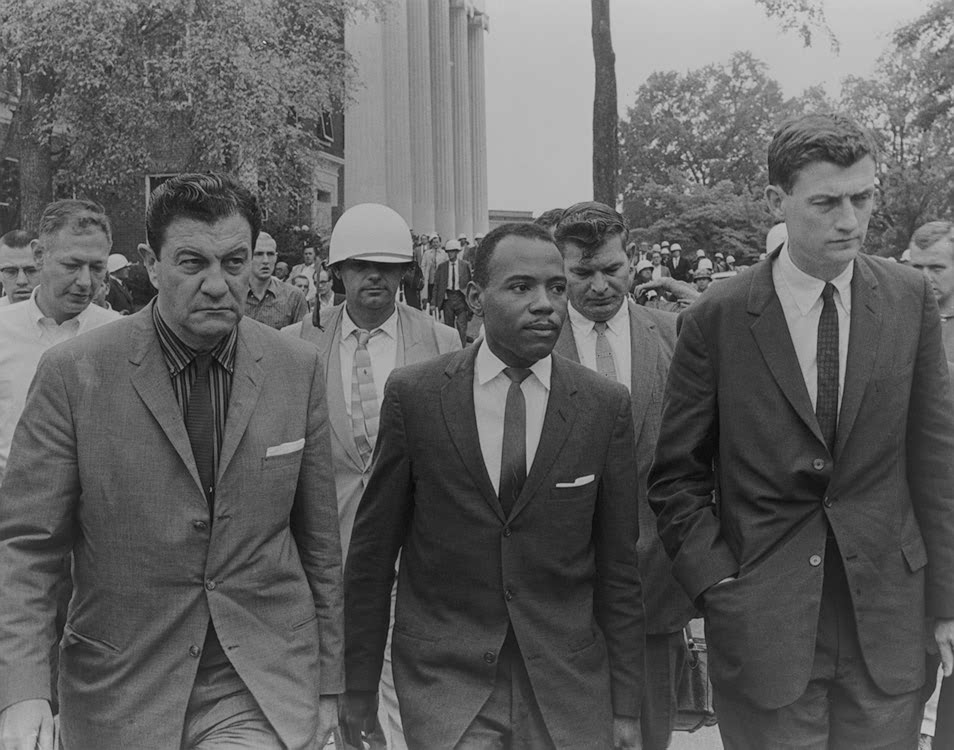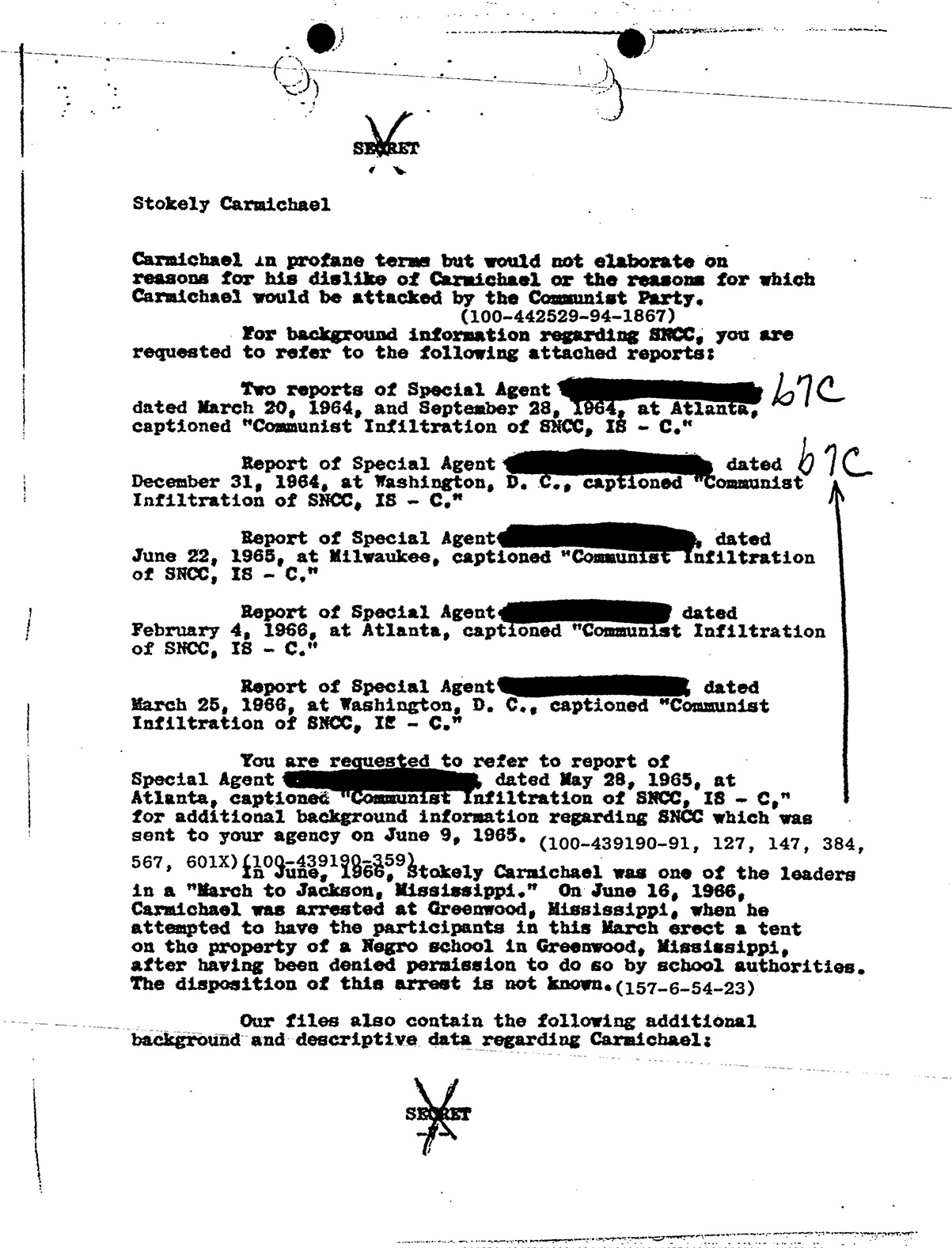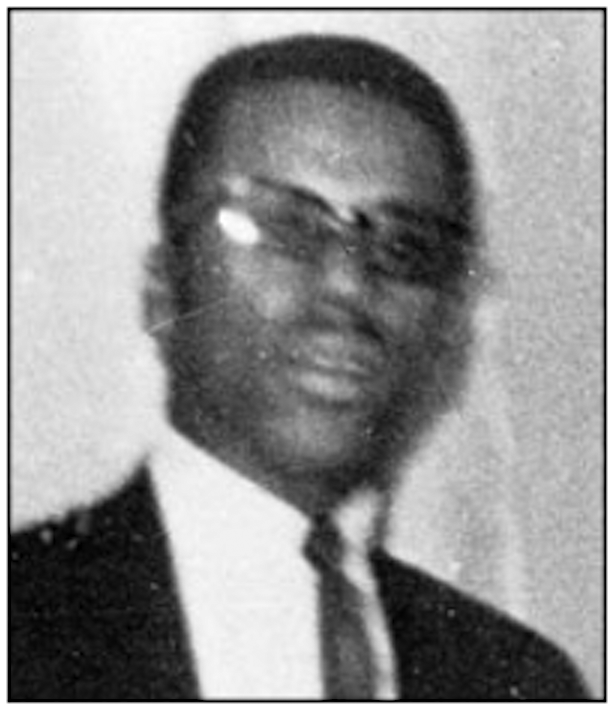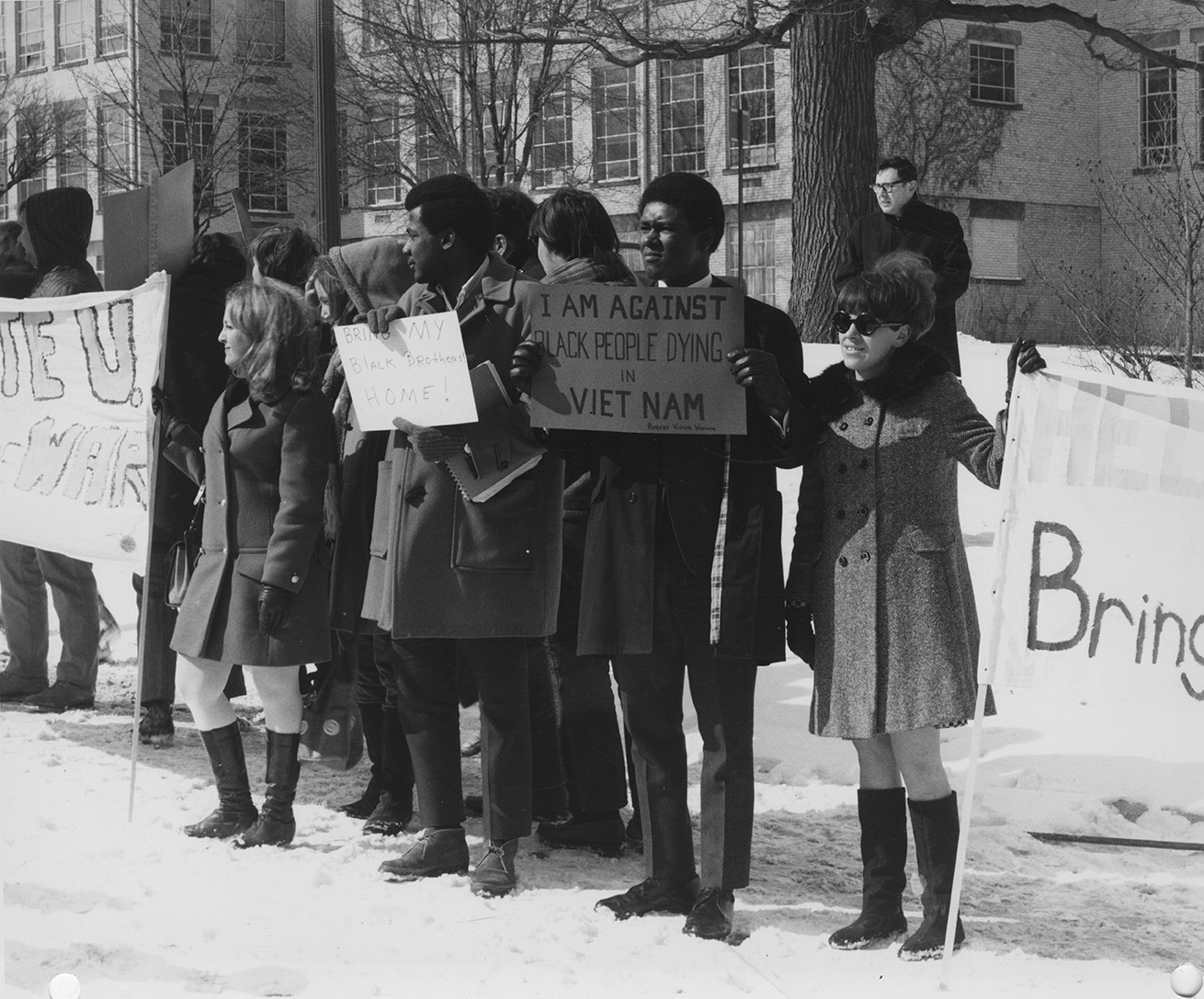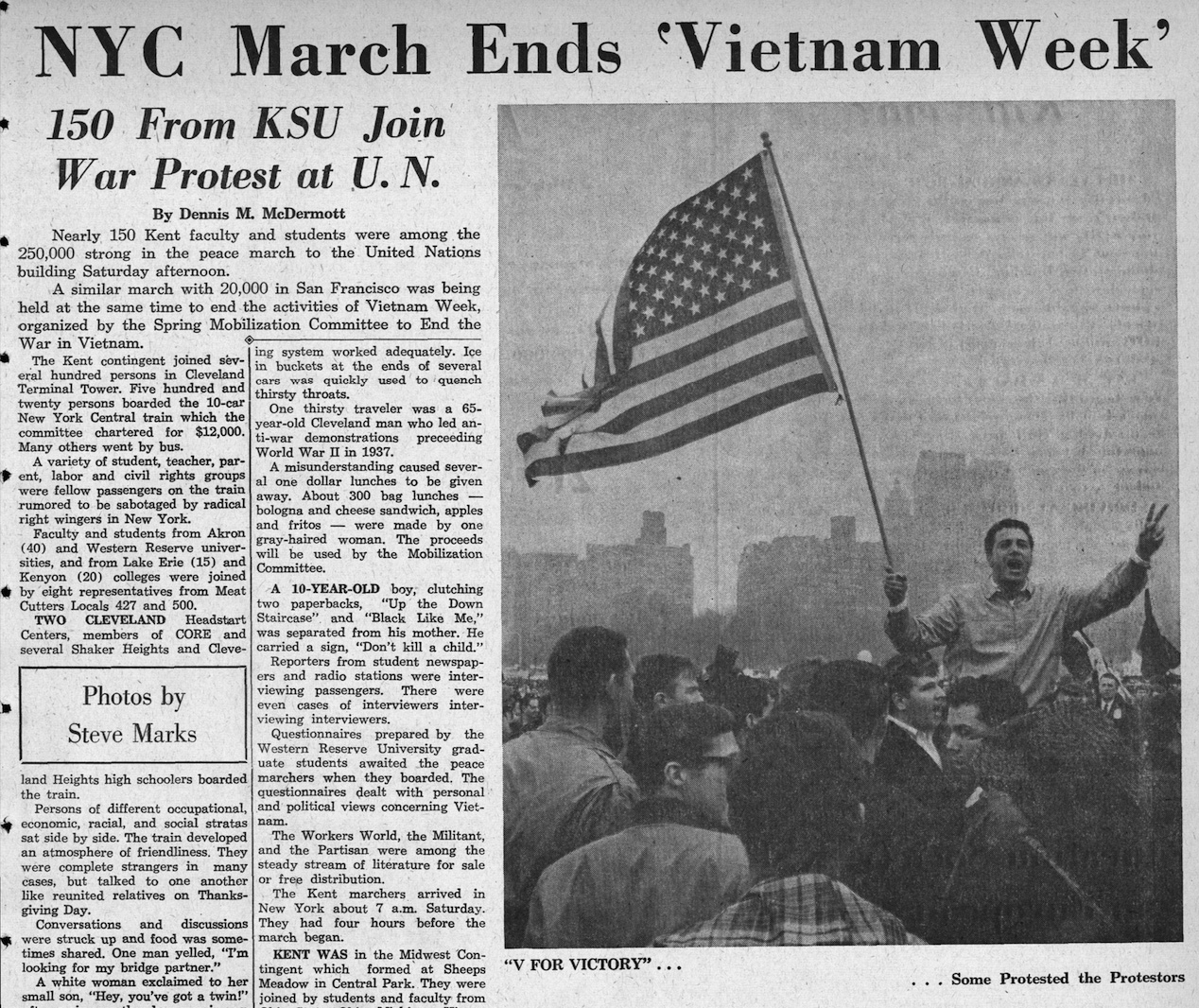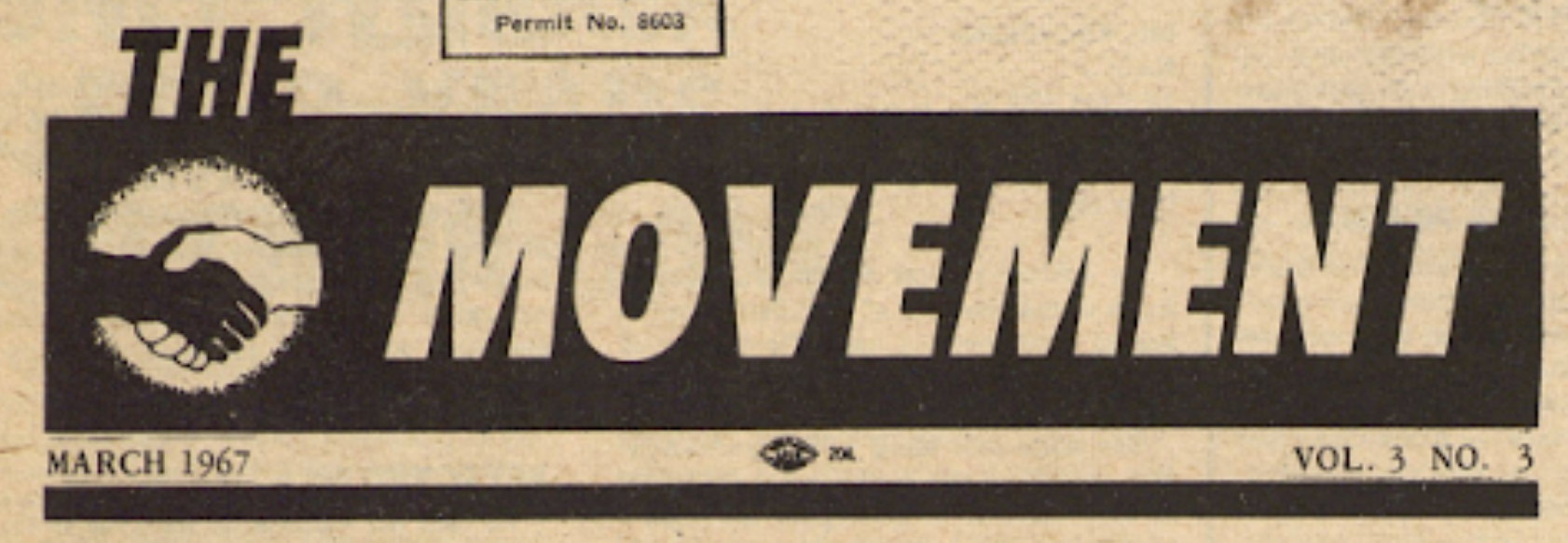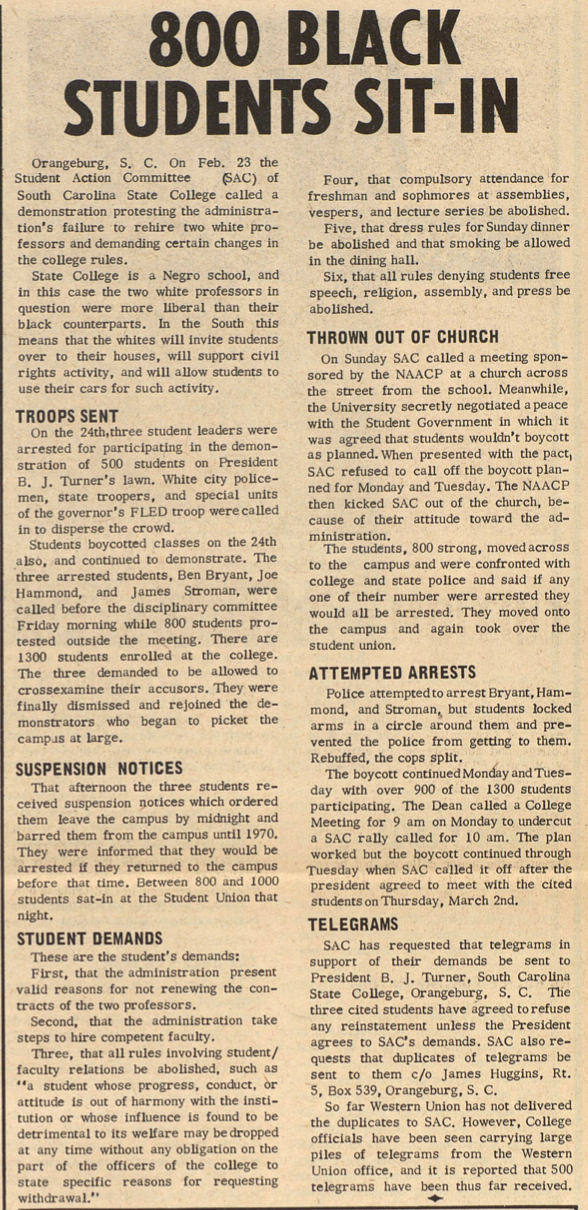May 4 50: Long Live the Memory: 1966-67
Special Collections and Archives
May 4 50: Long Live the Memory: 1966-67
Special Collections and Archives
May 4 50: Long Live the Memory: 1966-67
Civil Rights, Black Power, and Anti-War Actions:
Orangeburg, Kent, and Jackson, 1960-1967
|
1966-1967 |
Jackson: 1966-1967
|
June 1966 - Meredith March (March Against Fear) - James Meredith, who was the first African American to enroll at the University of Mississippi, started a solo walk from Memphis, Tennessee, to Jackson, Mississippi. On the second day of the walk, Meredith was shot by a white man and hospitalized due to his injuries. Other Civil Rights leaders and organizations took up his cause, continuing Meredith’s March, which “when it reached Jackson, Mississippi on June 26, the participants, now numbering 15,000, made it the largest civil rights march in Mississippi history.” (SNCC Digital Gateway. https://snccdigital.org/events/meredith-march/) Below: Photograph of James Meredith. Library of Congress. American Memory Project. James Meredith and Ole Miss, http://memory.loc.gov/ammem/aaohtml/exhibit/aopart9.html#0908.
|
|
“Black Power” Enters the Mainstream “The origin of the first use of the term Black Power varies....But, it was not until 1966, when Black Power made it into the mainstream. During the Meredith March against Fear in Mississippi, Student Nonviolent Coordinating Committee (SNCC) Chairman Stokely Carmichael rallied marchers by chanting ‘we want Black Power.’” --National Archives. Black Power Subject Guide, https://www.archives.gov/research/african-americans/black-power Below: Mention of Carmichael’s involvement in the Jackson, Mississippi, Meredith March events; FBI file on Carmichael notes numerous events at which Carmichael and other speakers invoked the concept of Black Power. Federal Bureau of Investigation. FBI Vault, Report on Stokely Carmichael.
|
|
May 1967 - Benjamin Brown was shot during a Jackson State student protest on Lynch Street focused against Jackson Police actions. “Benjamin Brown was a twenty-one year old truck driver and civil rights activist living in Jackson, Mississippi, when he was shot in the back, on the evening of May 11, 1967, by local police officers during a student protest near Jackson State College. Brown, a reported by-stander in the protest, died the following day. Brown's death prompted criticism from civil rights leaders and set off a series of protests and demonstrations in the Jackson area.” (Civil Rights Digital Library, http://crdl.usg.edu/people/b/brown_benjamin_d_1967/) Reports of the incident in The Clarion-Ledger were biased in terms of how the event was characterized (as a riot) and in their treatment of the victim Brown. The paper had, for many decades, been identified as one of the most racist newspapers in America. An Associated Press account about Brown that ran a day later focused on his being involved in the Civil Rights movement, his criminal record, and even mentioned his having been a patient in a “state mental hospital.” (See Clarion-Ledger, May 12, 1967, page 1 and May 13, 1967.) Below: Photo from Benjamin Brown entry. Southern Poverty Law Center. Civil Rights Martyrs. Civil Rights Memorial Center, Montgomery, Alabama, https://www.splcenter.org/what-we-do/civil-rights-memorial/civil-rights-martyrs.
|
Kent: 1967
|
The Kent Committee to End the War in Vietnam and others conducted a number of protest events on campus. Kent State students continued participation in national protest actions. A growing corps of student activists was forming within the Kent State community with major developments poised to take place in 1968 and 1969. Below: Two photographs from anti-war protests, most likely dating from late 1967. University Photographs collection. Kent State University Libraries. Special Collections & Archives.
|
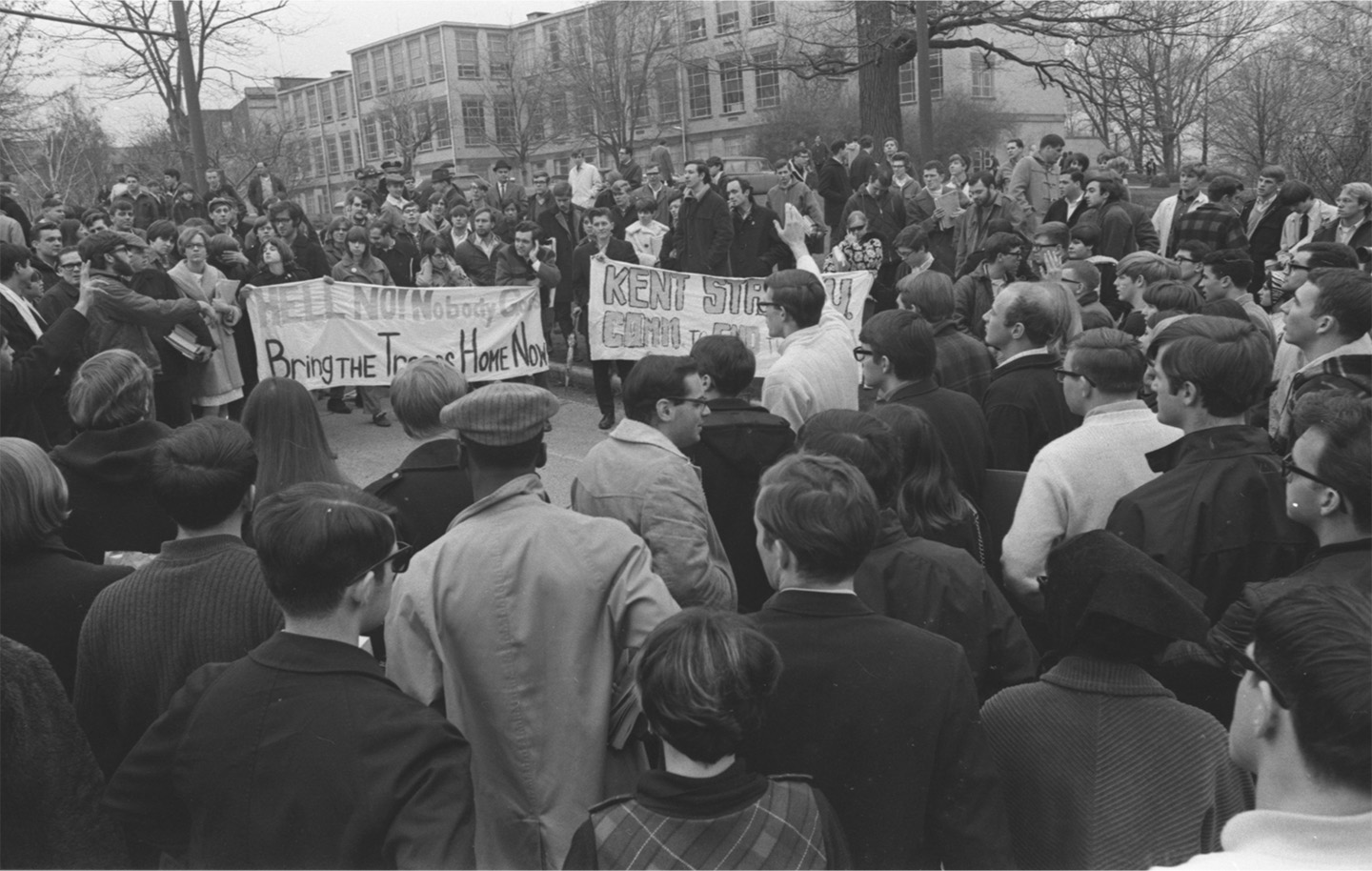 |
|
Below: Daily Kent Stater, April 18, 1967, page 5.
|
Orangeburg: 1967
|
At the urging of the Student Action Committee, South Carolina State students staged mass protests, sit-ins, and a campus strike in response to the school’s failure to rehire two white faculty members who were supportive of students’ civil rights activities, along with a list of other grievances. The series of events, referred to as “The Cause,” involved hundreds of students, and was reported in The Movement, SNCC newsletter of California. (The Movement. 3:3, March 1967, 5) Below: “800 Black Students Sit-In.” The Movement (March 1967): masthead; 5. Accessed via Independent Voices, https://www.jstor.org/site/reveal-digital/independent-voices/.
|
|
1966-1967 |

